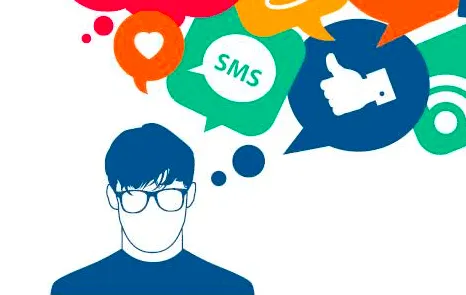
Customer Service and Millennials
 Last week, I had the privilege of attending the American Academy of Adverting’s annual luncheon in Chicago. As a proud Western Michigan University graduate, I was even more excited to meet the head of the WMU Advertising Department (my major) and President of the AAA, Dr. Karen Lancendorfer. Another surprise bonus was thrown into the mix when I realized that the guest speaker, Antonio Neves, was a fellow Bronco and someone I remember from my undergraduate days.
Last week, I had the privilege of attending the American Academy of Adverting’s annual luncheon in Chicago. As a proud Western Michigan University graduate, I was even more excited to meet the head of the WMU Advertising Department (my major) and President of the AAA, Dr. Karen Lancendorfer. Another surprise bonus was thrown into the mix when I realized that the guest speaker, Antonio Neves, was a fellow Bronco and someone I remember from my undergraduate days.
A Friday afternoon of surprises indeed.
Antonio Neves is the Director of Higher Education for about.me. An expert is working with millennials, Antonio broke down some statistics and nuances of working with this demographic of employees, along with what it’s like to prep undergraduate millennials for the ‘real world’. Before I go on, you may ask yourself ‘Who exactly is a millennial?’. Good question. Millennials are those of you who were born between 1981 and 1997. This date range is debatable, because I also hear 1977- late 1980s. Either way, you get the point. 🙂
Some stats shared during the presentation stuck out to me: a good majority of millennials would rather take less pay and associate themselves with a company and work they care about, versus getting a massive salary for the sake of extra cash in the bank. Another stat that resonated with me: only 28% of millennials feel that their employer is utilizing their skill sets. Adapting to new technologies is a big piece of that skill set list.
Which got me thinking about customer service.
 With so many millennial customers expecting to use technology to answers their own questions or receive a response quickly, I turned to a recent Forbes article highlighting customer service and millennials. Zendesk, a Metaverse partner, noted that millennials ‘simply expect technology to work, because that’s been their experience’. Think about it. A 20-something consumer can quickly finagle their mobile device to check out the shirt their friend was sporting on Instagram find it on a retailer website, place the item in their mobile shopping cart and should an issue occur, that same shopper would expect an in-the-moment customer service issue to be solved before the purchase is completed.
With so many millennial customers expecting to use technology to answers their own questions or receive a response quickly, I turned to a recent Forbes article highlighting customer service and millennials. Zendesk, a Metaverse partner, noted that millennials ‘simply expect technology to work, because that’s been their experience’. Think about it. A 20-something consumer can quickly finagle their mobile device to check out the shirt their friend was sporting on Instagram find it on a retailer website, place the item in their mobile shopping cart and should an issue occur, that same shopper would expect an in-the-moment customer service issue to be solved before the purchase is completed.
 Now imagine that millennial shopper goes through the motion of sipping his or her latte, liking a friend’s Instagram photo, finding the shirt from said-photo on retailer X’s website, placing the item in the shopping cart and then experiencing a customer service issue with either the checkout process or the inventory not being available. (Note, all this is happening with one hand). If this customer goes through all of those steps to spend money and buy a piece of clothing, imagine their disappointment if no one is around to handle their customer service inquiry. What may happen next is unknown, but I would put money on this person thinking twice about shopping at this retailer again.
Now imagine that millennial shopper goes through the motion of sipping his or her latte, liking a friend’s Instagram photo, finding the shirt from said-photo on retailer X’s website, placing the item in the shopping cart and then experiencing a customer service issue with either the checkout process or the inventory not being available. (Note, all this is happening with one hand). If this customer goes through all of those steps to spend money and buy a piece of clothing, imagine their disappointment if no one is around to handle their customer service inquiry. What may happen next is unknown, but I would put money on this person thinking twice about shopping at this retailer again.
The web can be so transactional and fast, yet the industry doesn’t spend enough time really understanding the user experience of shoppers, millennial all the way up to boomers. Good news is, we at Metaverse do. That’s why we continue to work on various customer service projects hand in hand with our clients.
Thank you to Dr. Lancendorfer for inviting me to the discussion and it was great to connect with you again, Antonio!
Blagica Bottigliero
VP of Digital Media

